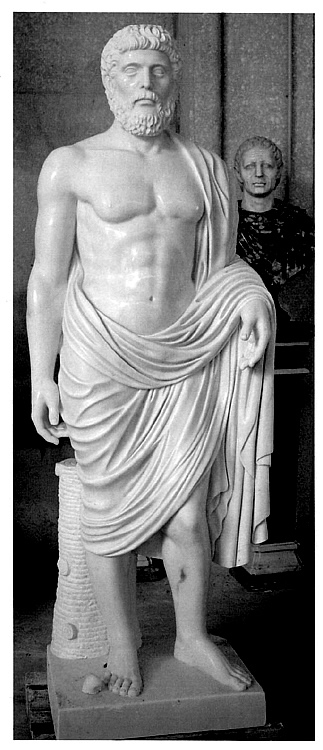Immanuel Kant, famous German philosopher from the Enlightenment, described things as having two realities. One was the phenomena, that which we can experience with the senses. The other is the noumena, the unknowable essence, "das Ding an sich" (the thing in itself), that we can never truly know. When I touch a tree, I feel the bark, I see as much of it as my eyes can take in, and I might even smell the scent of pine. But I do not sense the Tree itself, the essence of the tree - that is an experience of totality that is beyond comprehension or human ability.
If that's correct, then maybe this isn't the essence kaname indicates. Lucky for me, there are lots of intelligent folks who have thought about the essence of things over the centuries, so not everything hinges on Kant. (Never cared for him much anyway.) One of Aristotle's big ideas was the teleology of all things. "Telos" is Greek for "end," "purpose," or "goal." Aristotle claimed that everything had a goal that it was working toward, a purpose. For example, an acorn's telos is to become an oak tree and a human's telos is to reach eudemonia by living a virtuous life (see the Nicomachen Ethics). Duncan Shihan's post said, "...from there we are able to always move accordingly, to safely protect ourselves, and control our opponent - The Kaname." To me this emphasizes the overall purpose of an interaction, violent or nonviolent, as its kaname.
However, Duncan Shihan said some other things that make it clear kaname is not just about the overall purpose of something. Not in a restricted sense, at least. He said, "[Kaname] is in general noted as being the most ' important point '.[sic] ... We need to pin point the essential point for our lives and change with it constantly. ... We are searching the way to live life where we always move in the right direction and to the right position." So, it seems to me that this - as with so many things in Bujinkan - has a deeper application for the rest of our lives. I agree that everyone is searching for "the" way to live and "the" right direction to go in, whether they're conscious of it or not. Is kaname that abstract, individualized absolute, then? Maybe. If it is, then the emphasis on its constant change is even more important - people tend to become dogmatic and stagnate when they believe there is only one way to do things, one way to go.
As far as its application to training, the only way (that I'm aware of) it has worked its way into mine has been to look for what makes something what it is and not something else (e.g., what makes hicho no kata what it is and not ichimonji no kata). With more time and thought, I hope more of this mysterious "kaname" will be integrated into my training, both in the dojo and out.
This post is relatively short, but not for lack of confusion on my part, only a lack of coherent thoughts to express. To sum up, I possibly ruled out kaname as the noumena of something, confirmed that something's overall purpose (its telos) is involved, and there's an essential point to everything that constantly changes. The whole concept is still over my head, but I'm trying to jump up and reach it.
I hope something in this post helped you or at least got you thinking. If you have any thoughts or insights on the subject, I would be very grateful for the opportunity to read them in the comment section below. Thank you.
Onegaishimasu.
More quotes from Duncan Stewart's blog post:
"The kaname is also forever changing. In training, our partner will move. We aim to move naturally to the essential point or, the point that determines the outcome. This point is also the point where one is covered and free of openings. But, to get there, we must move using the principals of taijutsu and in kamae."
"Without searching and coming to understand the Kaname, the rest of the technique is based on nothing. In saying this, we see people doing wonderful looking demonstrations in classes but, do they know or are even away of the the 'essence' of the movement is? Or, are they just going through the motions and making it look like they know?"
